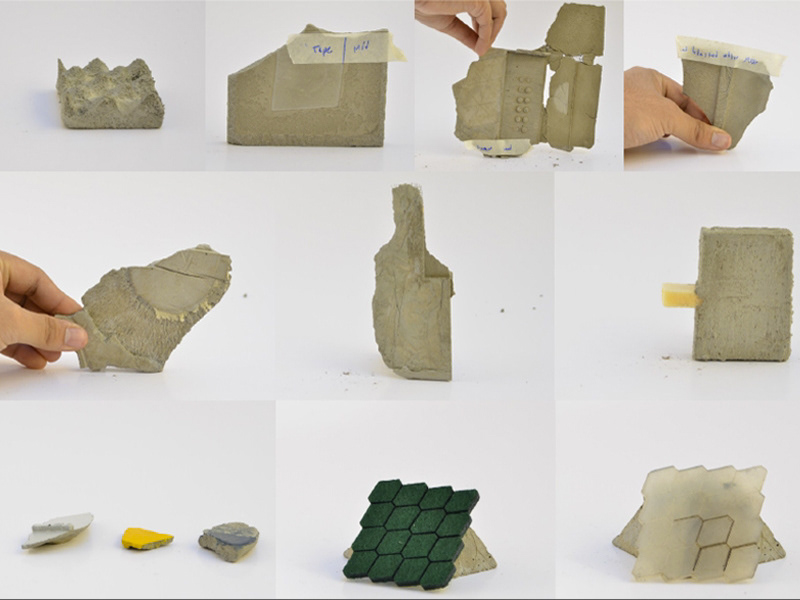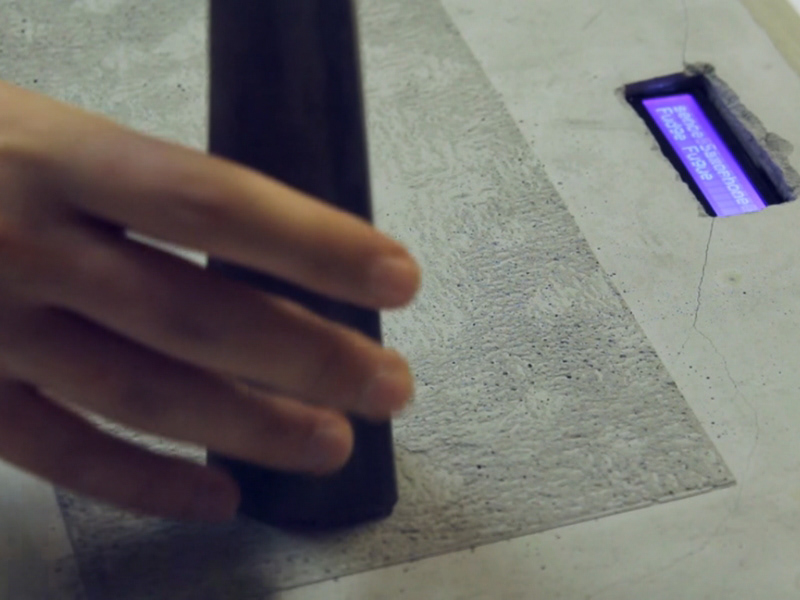Design experiment of a home audio experience based on spatial relation which people had with physical music collection in the past. Bringing value of this spatial relation to the digital/cloud music of the current times.

The working prototype cast in cement
Project Details
Team: Manas Karambelkar, Antoni Kaniowski, Sara Krugman
Duration: 4 weeks
Course: Tangible User Interface Design at CIID
Guides: Vinay Venkatraman, Richard Shed
Duration: 4 weeks
Course: Tangible User Interface Design at CIID
Guides: Vinay Venkatraman, Richard Shed
Description
As per the brief, we looked at the home audio experience today. Our user group for the research consisted of people from the age group of 40-60 years. All of them had used various media for home audio from vinyl records to cloud based music libraries. Through these interviews we realized that each one of them had a great attachment to the physicality of their music collection from the past and were missing that experience in their digital collection. This was inspiring for us as a starting point to explore how we could bring aspects of a physical music collection to the digital one.
Our collections of music are housed in a hard drive or online, no longer on a shelf or in our physical spaces. They have no body, no form. Without a physical form the digital collection can only be explored systematically. Rather than unique and personal organization that we do in our shelves, the digital music collection is organized in binary ways- through alphabet, date etc. This insight brought us to look at the difference between browsing and searching in physical and digital music collections. In the physical collection, whether you’re searching or browsing, you are likely to bump into an album you haven’t heard in years. In the digital collection browsing is hardly possible because of the systematic order, the potential for discovery and unexpected results is lost without.
On a more meta level- We see ourselves through the things that we are surrounded by – but how do we do this when these things have no physicality? More so, how do we explore these things when they are not arranged by us in the order that make sense to us? Binary systems that organize our collections do not allow for exploration or discovery.

Initial exploration of spacial association to the digital music collection
After this insight and research our focus was to give a spatial, physical relationship to the digital music collection in order to allow discovery and exploration. The active area of the Solid Fugue is textured, over time, the texture wears off creating a patina which serves as a personal and visual guide to frequented paths. The explorable area is virtually divided into boxes, each box represents a single album and has a specific location. The user can browse the albums by sliding the token on the textured surface and looking at the LCD displaying the album names. When the token is held over a certain area for four seconds, the album begins to play. More the album is listened to, the virtual area shrinks making it less probable to come across through discovery and increases the the area of the albums that have not been listened to as much.

An illustration explaining the working of The Solid Fugue
The form and token are made out of cast cement – a material and form that does not travel with you. We chose the material not for manufacture but to give our library of music a body that could not be confused, transferred or used for something else. Like the vinyl record- the solid fugue has one content- the digital music collection. After tens of iterations searching for the right texture and granularity, the form was made using a laser cut acrylic mold. Inside the form is a tablet that responds to the pen that is cased within the token.

Explorations for the 'token' to be used as the navigation tool

Material and texture exploration for the surface embodying the music collection

The texture that creates patina and guiding tracks for user's favorite music

